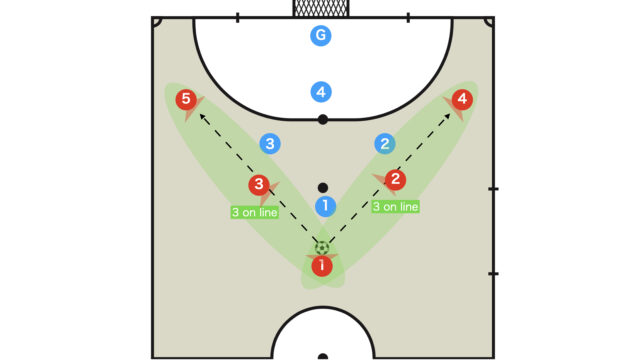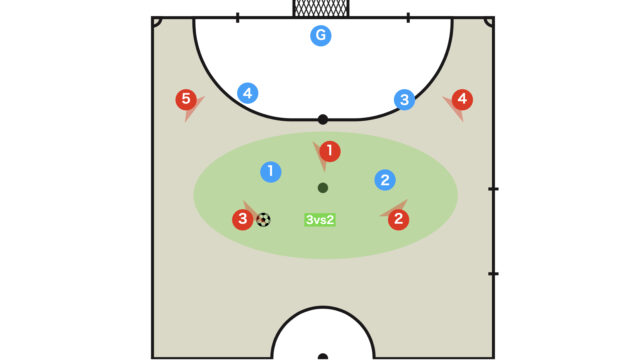In this article, we will teach the fundamental principles of house-type attack and rotating quadrilateral defense that power-play beginners should tackle first.
Fundamental Principles of Attack
Positioning and Body Orientation: Be Aware of the 5 Lanes

- Spacing with awareness of the 5 lanes
- Position on the side opposite to the dominant foot
- Body orientation aimed at the centroid of the pentagon
Since power-play has low mobility, formation (positioning) is extremely important.
If the goalkeeper is considered as the fifth FP, then with 5 FPs it is crucial to adopt a formation that is based on the 5 lanes created by dividing the court vertically into five sections.
The positioning of the 5 players is as follows:
- The front row (red 4,5) is around the CK area
- The second row (red 2,3) is near the boundary between the side lane and the half lane
- The back row (red 1) occupies the center lane
This concept applies to all attacks, including special situations, but it is preferable to position players on the side opposite their dominant foot.
When the Ball Is in the Back Row
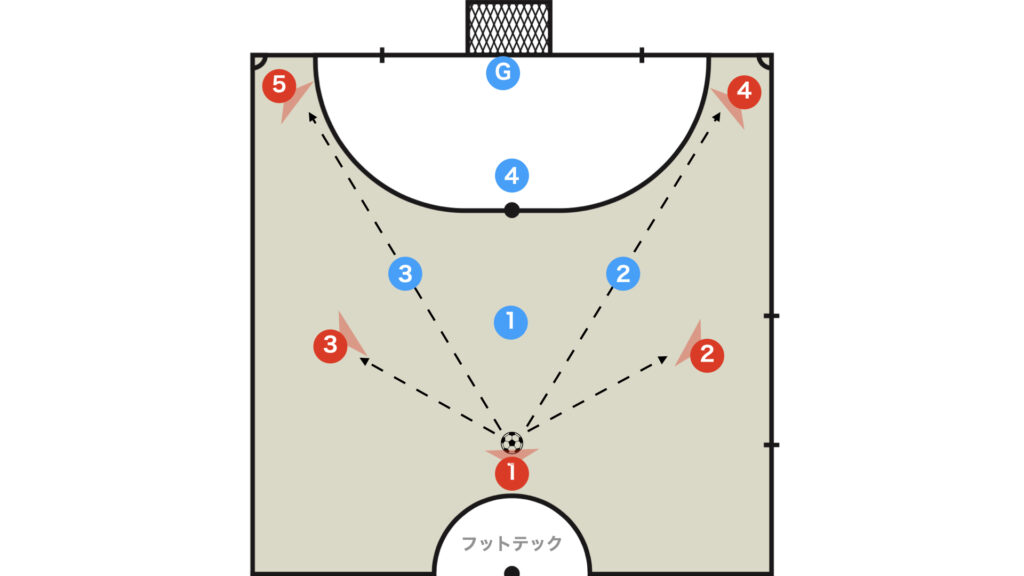
This area has the lowest risk of losing the ball, making it a place where players can take their time to settle down.
Basically, the core strategy is for the three players in the back to circulate the ball quickly through passes while watching for any delay in the defensive transition.
There are 4 key points that the attacking side should be aware of:
- Aim for a long pass
- Increase the speed of passing
- Use direct passes
- Minimize the time from trap to pass
Long Pass
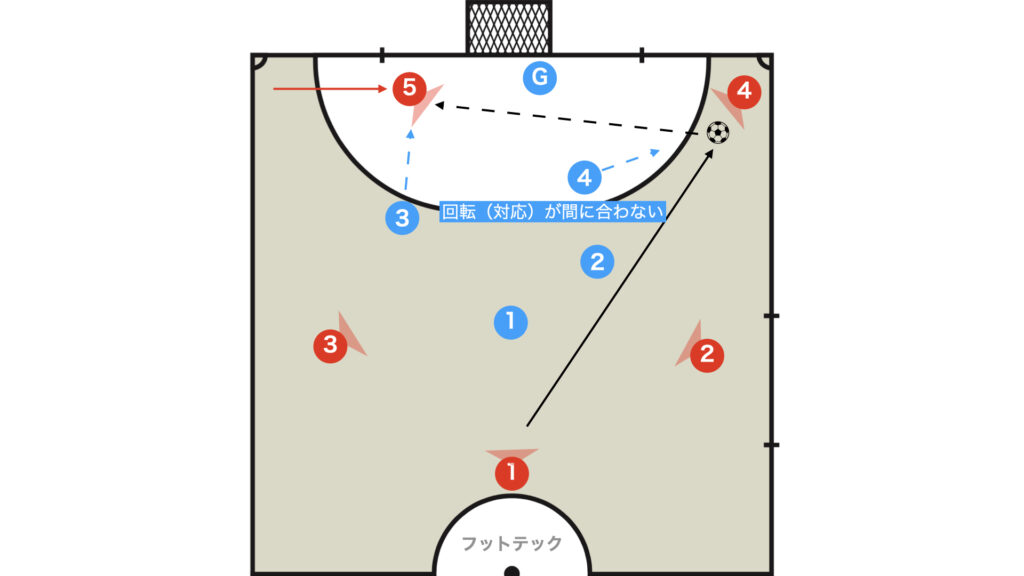
When the defensive transition is delayed, execute a long pass as shown in the diagram above.
If this pass is successful, the transition to the segundo will generally be too late, so an accurate pass to the segundo has a high probability of resulting in a goal.
When the Ball Is in the Second Row
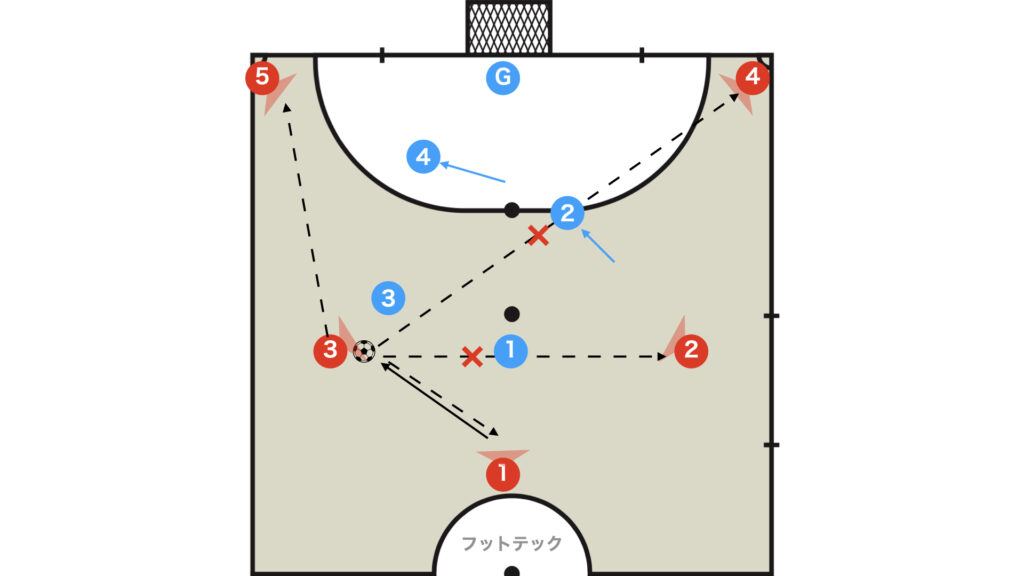
Players in the second row must have a broad field of vision and excellent situational awareness, as they have just enough angle to cover four players in one view.
Regardless of the house formation, the second row players are a key element.
On defense, as shown in the diagram above, by executing a long pass to red 4 and red 2, the side is prevented from changing drastically while strongly maintaining a compact quadrilateral.
The concept of maintaining a compact quadrilateral while rotating defensively is essentially the same as the rotating quadrilateral of the half in positional defence.
Long Diagonal Pass
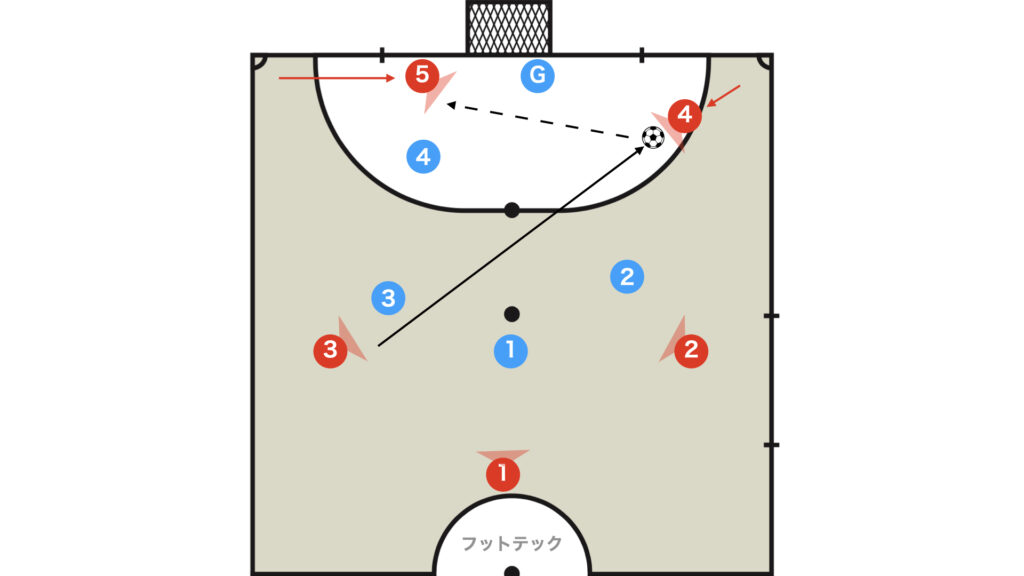
If the defenders fail to coordinate and a gap for a long pass opens up, connect the play quickly to finish, as shown in the diagram above.
When the Ball Is in the Front Row: Finish
Finish Triangle
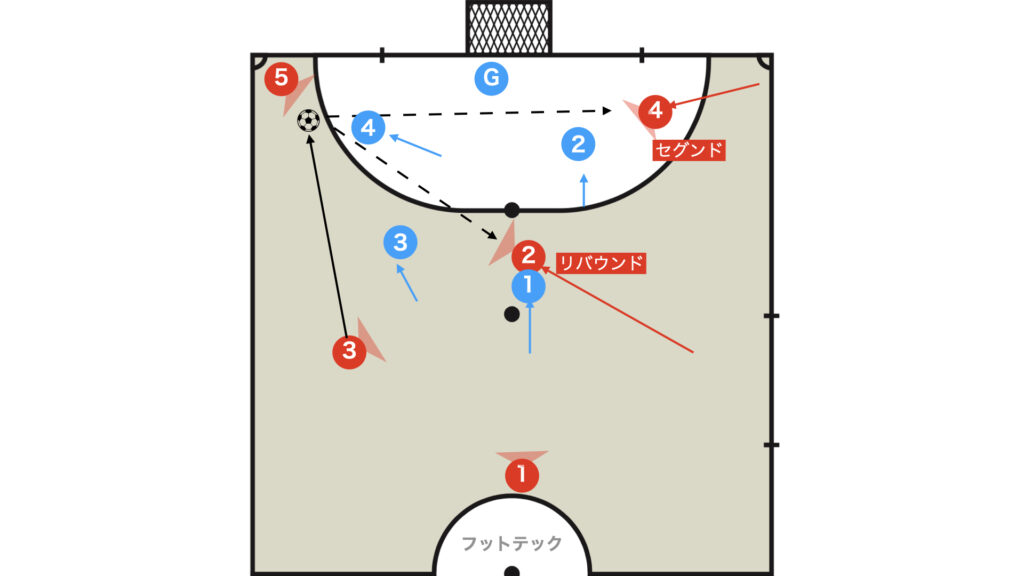
When the ball is played into the front row, it is a fundamental rule to turn back to the segundo or rebound and finish.
Therefore, it is essential that someone occupies the rebound position to form the Finish Triangle.
If it cannot be passed inside, then return to red 3 once more.
It is common for the player occupying the rebound position to be red 2 diagonally based on body orientation; however, if this is agreed upon by the team in advance, other players may also fill the role.
Finish Rectangle
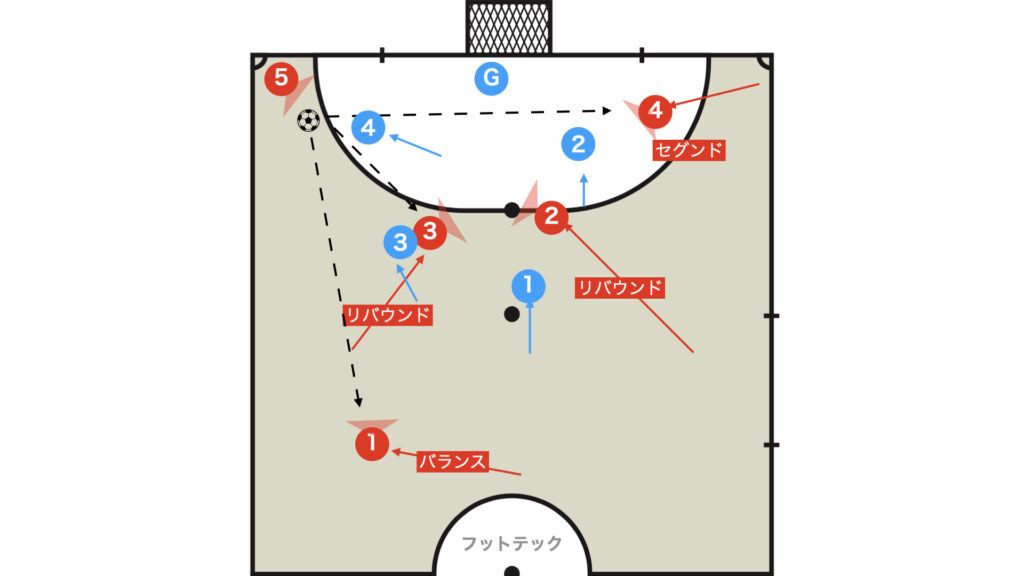
Since a power-play consists of 5 FPs, creating a finish rectangle by positioning 2 players for rebounds is very effective.
When the ball is turned back, there is a high chance of it spilling in front of the goal, so positioning two players for rebounds helps prevent counterattacks (PP reversal).
If red 3 enters the rebound, the rear passing lane disappears; therefore, it is important for red 1 at the back to secure a balanced position and move into a spot where they can receive the ball.
Press Line in Defense
In power-play defense, setting the height of the press line is extremely important.
Basically, most teams set it at the second PK line, but when defending in a power-play while trailing, you must also consider aggressively pressing from the front.
When the Press Line Is High
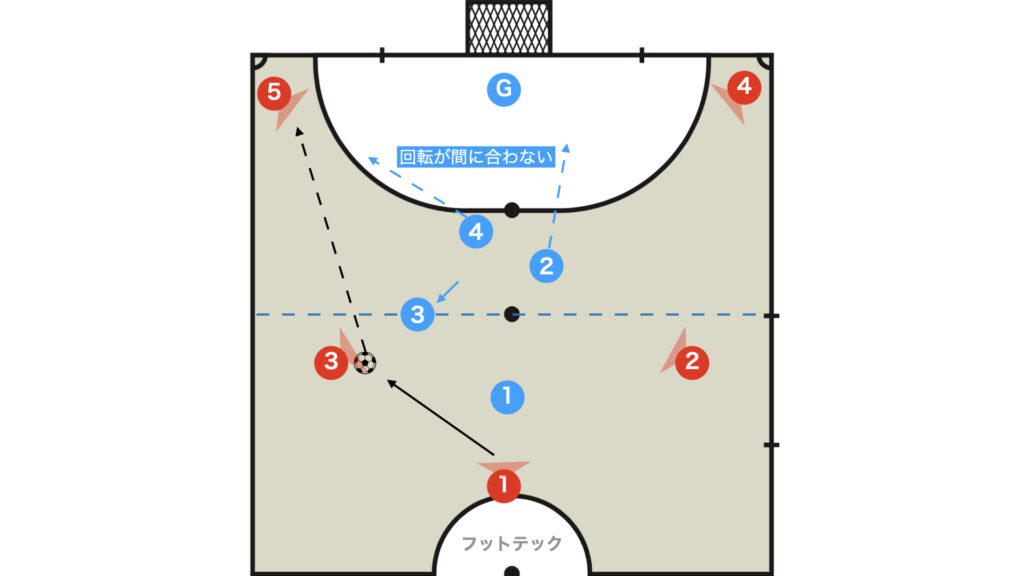
Setting a high press line has the advantage of aggressively winning the ball; however, if the ball is quickly passed to the rear, the defensive transition may not keep up.
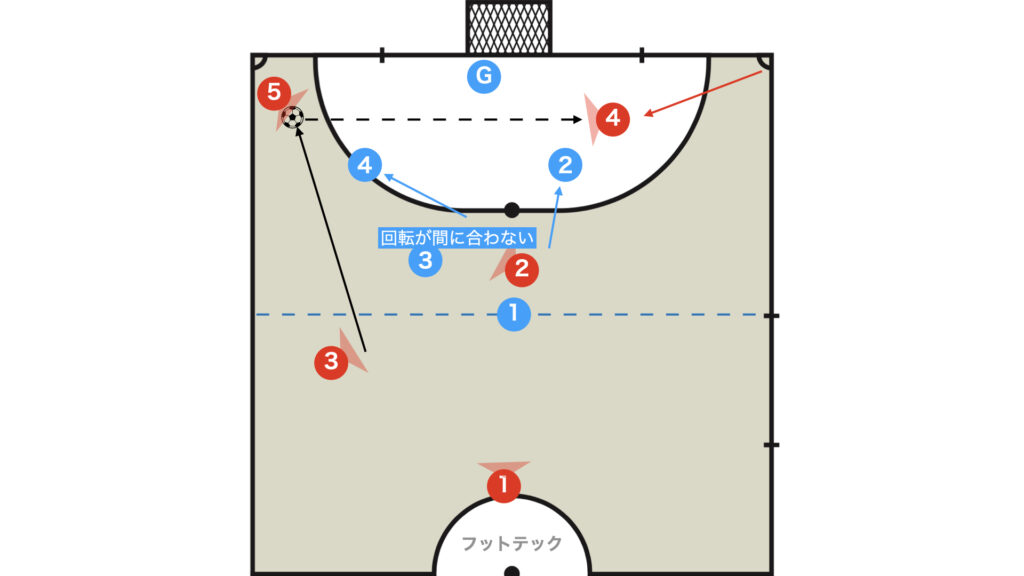
As shown in the diagram above, to avoid conceding easily, the fundamental defensive principle is to set the press line at the second PK line and maintain a compact quadrilateral.
When the Press Line Is Low: Second PK Line
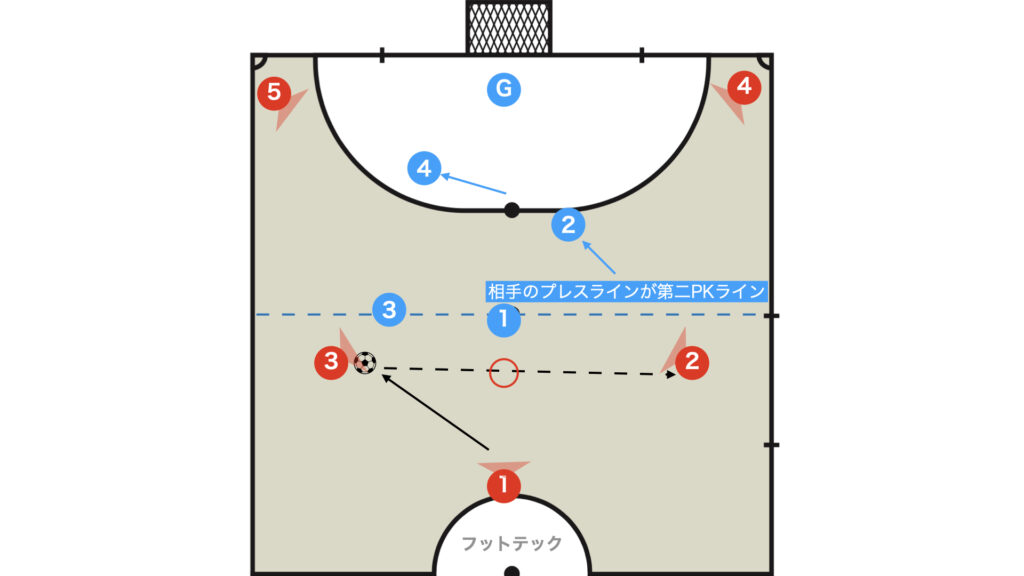
Setting the press line near the second PK line, conversely, makes it easier to allow long passes between the second row players.

The attacking side should take advantage of the defensive transition delays caused by lateral long passes.
Summary
The power-play attack and defense introduced in this article are the very basics of power-play. Mastering this formation will help in understanding other formations.
It is recommended to practice gradually with your team first, then try it in matches and put it into action.
Thank you very much for reading this article to the end.
If you found this article useful, please consider sharing it using the social media share buttons above.
We regularly share valuable insights on futsal tactics on Twitter, so if you haven’t followed us yet, we’d appreciate your support!
We are committed to raising the level of futsal in Japan by sharing high-quality information through discussions with individuals who have coaching experience in the F.League and overseas.
If you have any questions or notice any mistakes, feel free to leave a comment below.
We update our articles regularly, so if you’d like to keep reading, please bookmark our site or search for “FutTech”!
